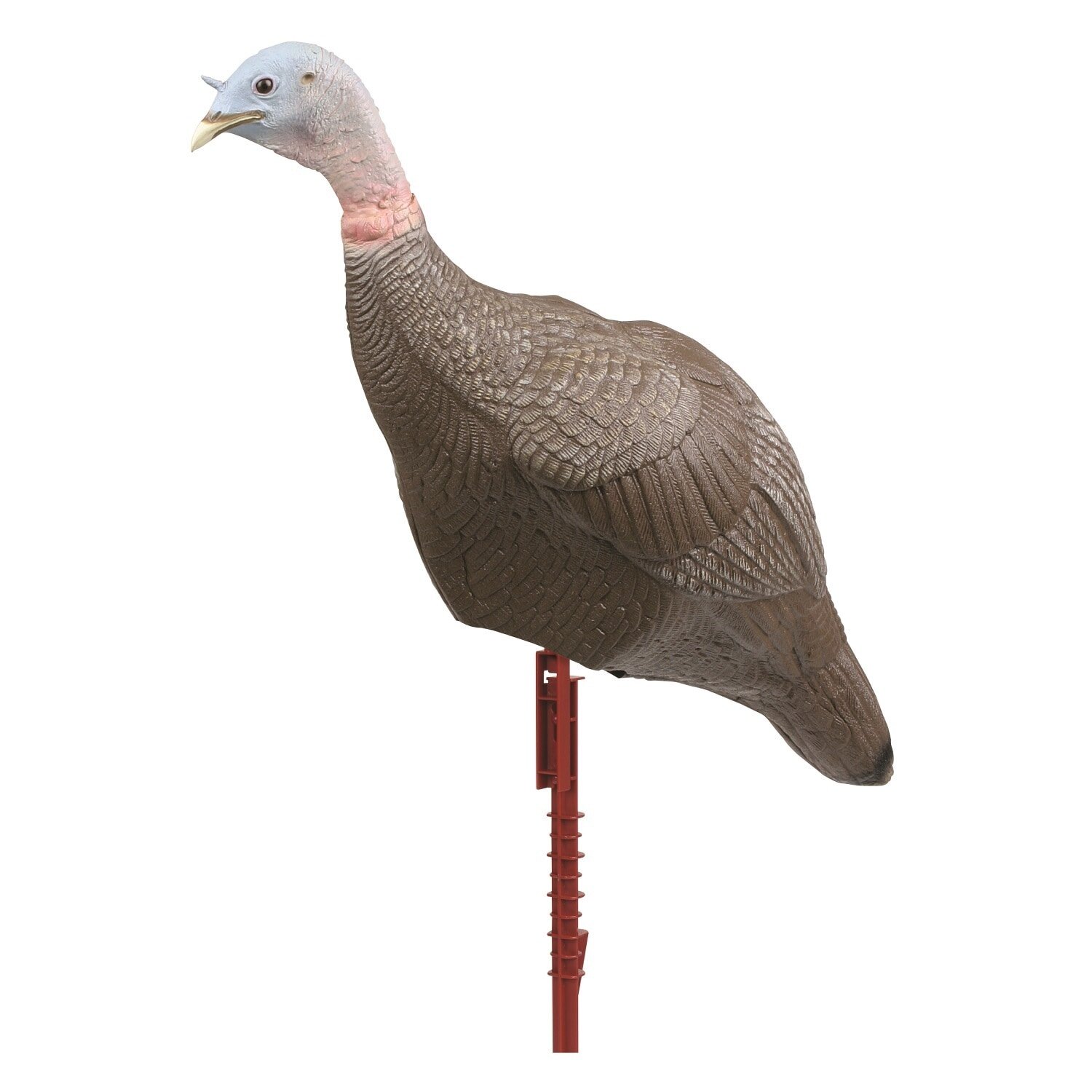Lessons from the Turkey Woods: Decoy Decisions
Springtime can be frustrating for anglers, especially in Ontario where the not-so-synchronized nature of our fishing seasons and ice-out creates a numbing lull of angling opportunities as we patiently wait for pike and walleye to open. Although perch and spring steelhead can help keep you on the water, I take my annual three-week break from the lake and head for the woods for spring turkey hunting to help fill the need for the outdoors.
Turkey hunting has been something I have done rather casually since I was about 14, spending only four or five days in the field every season due to work and school commitments, as well as my municipality’s annoying and dated rule against gun hunting on Sundays. This limited commitment to turkey hunting led to about as much success as you would expect, giving me more in common with local bird watchers than any respectable turkey hunter. On the bright side, however, these unprepared days in the woods have provided me with a large sample size of things not to do while hunting these allusive birds, ranging from mistakes such as over-calling, impatience, lack of scouting, and decoy selection and placement.
This season was the first time I was able to take the task of turkey hunting seriously, finishing up my university degree and having over a month to kill before my guiding season begins. With this free time, I decided to commit myself 100% to the task of bagging some turkeys, compiling all the lessons learned from my unprepared hunts and using the experiences to help this season be a success- starting today with decoys.
You Get What You Pay For
The first of these lessons stem from an unfortunate, and rather comical, experience from one of my first turkey seasons back when I was in high school. This hunt was shaping up to be one of my most successful, finally starting to master my slate call and eventually calling in a distant and stubborn tom* that I was talking to all morning. After nearly an hour of communication, the tom finally emerged from the tree line with a thundering gobble, coming in full strut towards my discount foam hen decoy, purchased from the Canadian Tire clearance bin the day before. Hands shaking and heart pounding, I raised my gun to my knee, getting ready for the bird to enter my shooting range. As thoughts of turkey dinner and bragging rights raced through my mind, a strong gust of wind picked my foam hen up off its peg and sent it tumbling across the field like a $35 tumbleweed. Despite the impressive distance that this hen was able to continue its somersault, the tom quickly suspected that the hen he was conversing with all morning may have been an imposter and quickly sprinted out of sight.
This experience was just one of many hunting experiences that exemplify the age-old mantra: “you get what you pay for”. In the turkey decoy world, the price point to get into a decent set of decoys is thankfully pretty low, often around $120 per decoy; a fair price when one or two is all you need. You can, of course, kill turkeys with the cheaper varieties, however, gusts of wind and keen-eyed turkeys will soon become your enemy. The differences between the two ends of the spectrum can be seen below: a realistic, tom-enticing hen on one end; and, on the other, a creature on a stick.
Selecting Your Spread
After making a worthy investment into some realistic and stable turkey decoys, decisions need to be made as to which variations of decoys are best suited for your area and situation.
Hen, Jake:
A jake and hen is perhaps the most decoy common arrangement in turkey hunting, providing toms with the female they have been searching for, as well as a frail young male to intimidate on his way in. This setup is particularly effective during the early season when testosterone levels are running high and big toms are seeking to claim their women and their territory. When birds are especially aggressive, it is not uncommon to see them charge your male decoy, putting them directly within shooting range and putting on a show fascinating enough to make you prolong the pulling of the trigger.
Solo Hen:
The solo hen is the simplest decoy option you can bring into the woods and can often be one of your most effective. This setup is most effective late in the season when beat-up toms are weary from their early-season battles, providing them with an easy and willing companion that will be difficult to pass up. This can also be utilized in heavily pressured areas as well.
This ended up being the case for me last season, hunting a property that sees relatively high hunting pressure. On this property, I was often able to bring the birds off their roost into my calls, however, once they got their eyes on the jake, they decided to keep their distance and stay out of shooting range. Observing the birds’ hesitant behaviour on opening day, I decided to leave the jake decoy in the truck for the following hunt, putting out a solo hen to see how their attitudes would change. This quickly proved to be the right move, as the birds were much keener to investigate the single hen and eventually got within shooting range, allowing me to take my first bird of the season.
Tom:
The final decoy option is the solo tom. This is by far the most aggressive approach you can take to turkey hunting, however, it can be extremely effective during the early season. While tom decoys can be purchased in the traditional style (hollow plastic body on a peg), some more creative and aggressive options have begun growing in popularity over the last few years.
The most notable advancement in turkey decoys actually seems to be a bit of a simplification, with the chicken-on-a-stick design becoming increasingly popular. These handheld decoys provide a large fan to conceal the hunter and are equipped with a pole and a gun rest so that the hunter can approach the bird under the guise of being a challenging tom. While this may sound comical, and in fact actually is when seen attempted, its effectiveness is undeniable as the turkey’s obsession with the incoming fan seems to completely blind it from the fact that two human legs are hanging beneath it.
Chicken-on-a-Stick
Adding Realism
Besides the placement and quality of the decoys, it can also be beneficial to consider the position of the decoys in order to make them appear more natural and attractive to approaching birds. For example, try to have the decoys face the same way in the field, as you will rarely see turkeys facing opposite directions when they are moving or feeding. Having the decoys facing in the direction that you are expecting the turkeys to approach is also a good idea. This obviously takes some scouting and experience to estimate the direction, but turkeys seem to be much more enticed by the faces of fake turkeys rather than their behinds.
Safety
One final thing to consider when hunting with decoys is to always know who else is hunting around you, especially when using jake or tom imitating decoys as you may be fooling other hunters as well as the birds you are after. This can be avoided by avoiding the use of gobble calls or male decoys on public land and communicating well with property owners to ensure that you know who else may be hunting the land you are on.
*terminology: a tom is a adult male turkey, a hen is an adult female, jake is a juvenile male, and a jenny is a juvenile female




